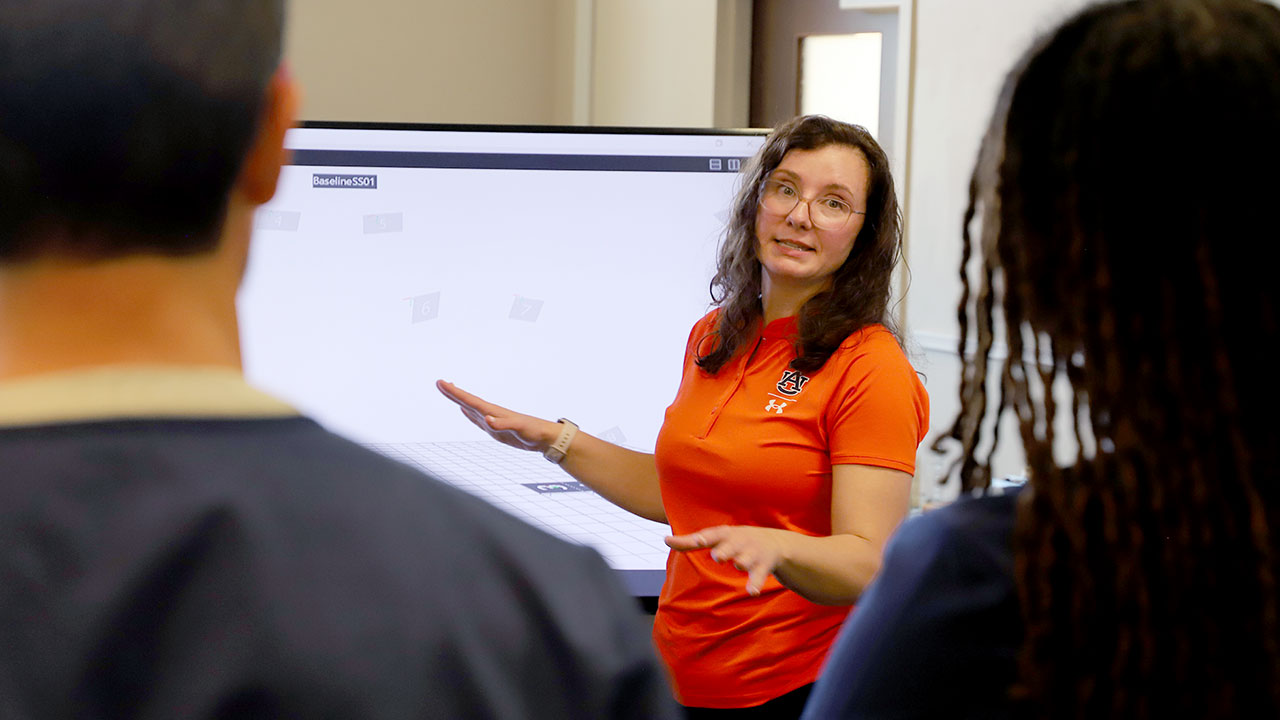content body
Dr. Jaimie Roper’s research aims to address what she says will be a major issue involving mobility in just five short years.
“By 2030, we’ll have more older adults for the first time ever than we do children in this country,” said Roper, an associate professor in the Auburn University College of Education and director of the School of Kinesiology’s Locomotor and Movement Control Laboratory. “This is a really important problem. But by training students and giving them these hands-on experiences, we’re becoming a solution.”
That solution is focused on helping aging adults—now and into the future—and it all has to do with her lab’s work into what good, quality movement is all about.

“Movement quality alongside movement quantity is important,” she said, adding that today’s watches and phones are good at tracking quantity. “We already know how many steps we're taking, for example. But we don’t really have a good idea with these devices what movement quality looks like.
“When you combine them, that’s when we start to understand what good movement looks like. Those who will benefit from our work are really the people who will be older adults in 2040 and 2050 because our future stakeholders, the students that are in the lab now and in the next 10 years, are the ones who will turn into our clinicians and our scientists who are solving movement problems for us.”
Roper said her lab studies both biomechanics—essentially, how the body moves—as well as the neurocontrol of human movement, which is how the brain controls movement.
“And ultimately, we use both of these things to enhance mobility in people who are aging,” she said.
The World Health Organization (WHO) generally considers people aged at least 60 years to be "older adults" or "older persons." Roper said that regardless of age everyone’s body is designed for movement, and it needs it.
“So, start thinking of the things that you find joy in that also feel good to your body, because I guarantee there’s something that feels good in terms of movement,” she said.
Roper is optimistic about the future of new technology in her field, adding that, “we’re going to start seeing more publicly accessible devices that can also tell you more—and more accurately—the quality of your movement.

But, she said, it all must begin with good questions from the lab.
“It’s really easy to say, ‘Oh, I really want to use this fun, shiny toy. Let me design a question around it so I can use this,’” she said. “But really, that’s not going to help our field move forward with mobility challenges. Instead, we need to be thinking about good questions first and then what tool do I need to answer the question?”
Roper said her lab aims to ask and answer such questions of tomorrow today.
“Our research is opening doors and improving lives by equipping the next generation of scientists and clinicians so they can help people who are aging not just age well but also thrive and become resilient in aging,” she said.
LOCOMOTOR AND MOVEMENT CONTROL LAB
The Locomotor and Movement Control Lab in Auburn's School of Kinesiology addresses challenges in mobility and locomotor function in aging by pursuing foundational knowledge of human movement and sensorimotor systems and fostering the growth of junior scientists through training, education, and mentorship, to ultimately achieve healthy aging.
Learn more




